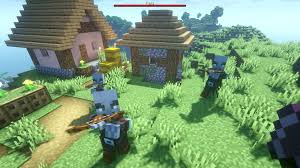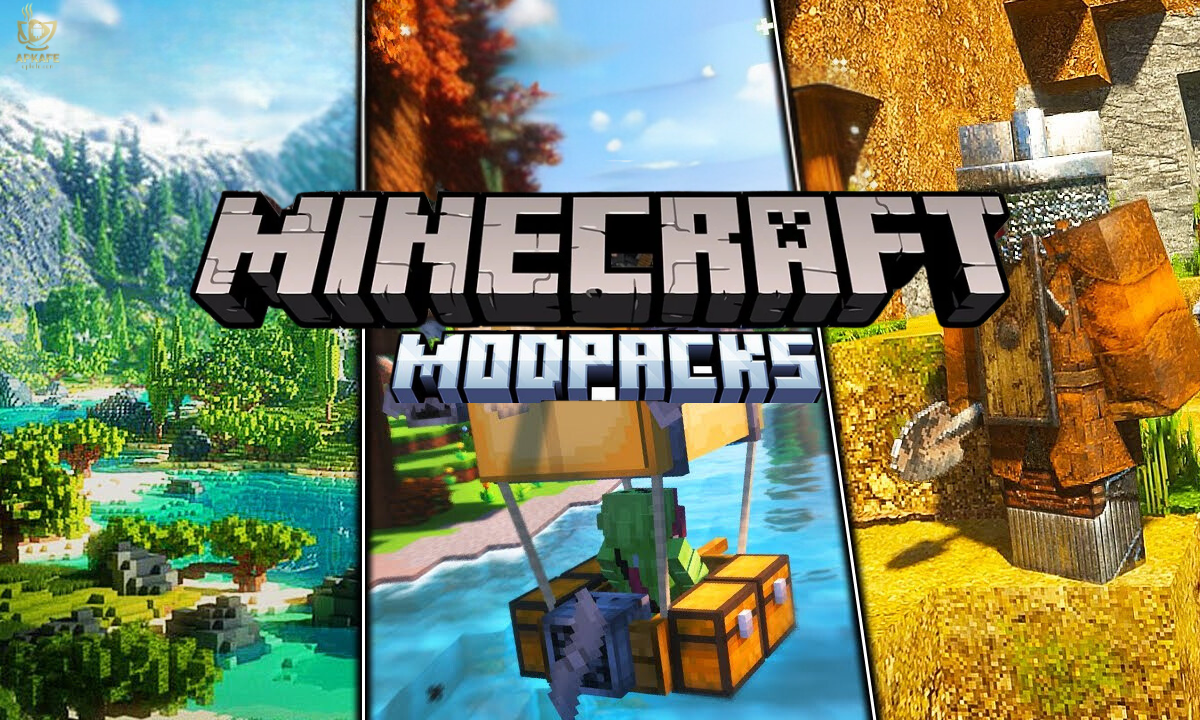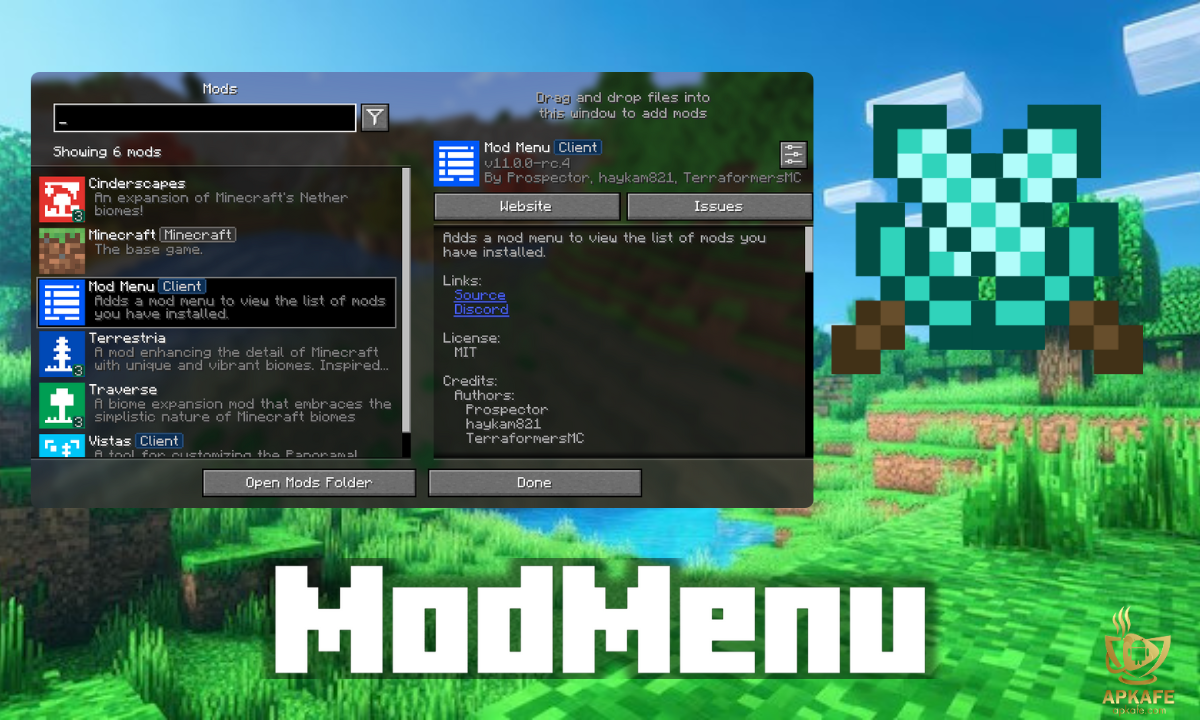Explore Minecraft Villages: Your Ultimate Guide to Building, Trading, and Thriving
Welcome to the enchanting world of Minecraft villages, where adventure meets community building! Whether you're a seasoned player aiming to master the art of trading and village management, or a newcomer curious about creating your own village from scratch, this comprehensive guide is your key to success. With rich resources and endless possibilities, Minecraft villages offer more than just a place to explore—they provide a canvas for your creativity and strategic skills. Let's uncover the secrets of locating, populating, and defending your village, turning it into a bustling hub of activity and commerce.
Welcome to the enchanting world of Minecraft villages, where adventure meets community building! Whether you’re a seasoned player aiming to master the art of trading and village management, or a newcomer curious about creating your own village from scratch, this comprehensive guide is your key to success. With rich resources and endless possibilities, Minecraft villages offer more than just a place to explore—they provide a canvas for your creativity and strategic skills. Let’s uncover the secrets of locating, populating, and defending your village, turning it into a bustling hub of activity and commerce.
What Are Minecraft Villages?
Minecraft villages are dynamic ecosystems that serve as a pivotal resource throughout your gaming journey. Typically found across various biomes, villages are not only a sanctuary filled with helpful goods and trading opportunities but also a cornerstone for gathering and social interactions among villagers.
Finding Your First Minecraft Village
Village Locations
Villages in Minecraft are sprinkled across the vast tapestry of the game’s biomes, each offering a unique architectural style and atmosphere. You might stumble upon a village nestled in the sprawling plains, hidden amongst the dense foliage of the taiga, perched in the stark beauty of snowy tundras, or tucked away in the warmth of a desert biome. Each location not only enhances the village’s aesthetic but also influences the types of resources and materials you’ll find there. Finding a village in each of these settings isn’t just about the resources—they are picturesque communities waiting to be a part of your Minecraft saga.
Using Tools to Locate Villages
For those who prefer a more directed approach, several tools can guide you to your nearest village, making the journey less about chance and more about the destination. Online resources like the Minecraft village finder at Chunk Base can pinpoint village locations using your game’s seed. This method is especially useful if you’re looking to plan ahead or find a village in a specific biome.
Alternatively, in-game commands offer another layer of convenience for players not averse to using them. By simply typing “/locate village” in Bedrock edition, or “/locate structure” followed by your desired village type in Java edition, you can quickly find the coordinates of the nearest village. This powerful tool can drastically reduce your search time, allowing you to focus more on what you’ll do once you reach your new village home.
Crafting Your Own Minecraft Village
Building a Village
The journey of building your own village starts with the vision of a home for every villager. Start simple: construct a variety of houses equipped with all the essentials—beds for rest, workstations for trades, and plenty of light to keep the space warm and welcoming. Each building can reflect a part of your personality, whether it’s a quaint cottage with blooming gardens or a grand stone fortress that stands tall against the skyline. As your village grows, you can add specialized structures like libraries, smithies, and granaries, enhancing its functionality and aesthetic appeal.
Think of your village layout: arrange the homes around central gathering points like wells or marketplaces, creating a sense of community and connectivity. Incorporate paths that weave through the town, lined with flowers or lanterns, to guide villagers and visitors alike through your carefully crafted settlement. Each structure you build adds to the tapestry of your village, turning it into a reflection of your Minecraft mastery.
Protecting Your Village
With your village taking shape, safeguarding it becomes paramount. The joy of building is matched by the responsibility to protect its inhabitants. Start by fortifying the perimeter—stone walls or sturdy fences can deter most wandering threats. Gateways controlled by gates or sophisticated Redstone contraptions can offer secure access points without compromising the village’s charm.
Lighting is your next line of defense. Brightly lit streets and homes discourage hostile mobs from spawning, ensuring that your villagers can roam freely at any time without fear. Positioning Iron Golems strategically around the village will provide a strong, if silent, guardian force that adds an extra layer of security.
Consider the layout for tactical advantages; a well-placed watchtower or a series of elevated platforms can offer villagers and players alike a vantage point to spot approaching dangers. Regular patrols, either by yourself or trusted companions, can keep the village boundaries secure and the inhabitants safe.
Breeding and Populating Your Village
Encouraging Growth
Breeding villagers isn’t just about increasing numbers; it’s about fostering a thriving community that can sustain and grow itself over time. To encourage villagers to breed, you must create an environment that meets all their needs. First and foremost, ensure there are ample beds placed within the village, with more beds than there are villagers. Each new bed represents a potential new villager.
Next, focus on the villagers’ well-being by providing plenty of food. Villagers need access to food items like bread, carrots, potatoes, or beetroots to be willing to breed. You can either throw these foods to them directly or design your village with functional farms where villagers can harvest crops themselves. This not only makes them ready to breed but also adds a layer of self-sufficiency to your village.
Creating social spaces such as central squares with meeting points like bells can encourage villagers to gather and interact, increasing the likelihood of breeding. The more content and connected the villagers feel, the more likely they are to contribute to the growth of the village.
Importing New Villagers
While breeding plays a crucial role in expanding your village’s population, sometimes it’s not enough, especially if your village suffers from a low initial population or if you’re recovering from a raid. In such cases, importing villagers from other villages or curing zombie villagers can be effective strategies.
To import villagers from other villages, you can use boats or minecarts to transport them. This method, often referred to as the “boat kidnap,” involves placing a boat near a villager, which they will enter, and then pushing the boat towards your village. This journey might be slow, but it’s often a safe and effective way to bring new life to your village.
Alternatively, curing zombie villagers can be a more adventurous and rewarding approach. You can lure zombie villagers into your village and use a splash potion of Weakness followed by a golden apple to cure them. This not only adds to your village’s population but also gives you a chance to play hero, saving villagers and transforming them back to their normal selves.
Embracing Village Diversity
Types of Villages
– Plains Village: Found in the vast, open grasslands, these villages are marked by their wood and stone structures. They’re often sprawling with lots of open space, mirroring the expansive nature of their environment.
– Desert Village: Rising from the sandy landscapes, desert villages are built with sandstone and feature flat-roofed houses to ward off the relentless sun. The terracotta and sandy paths contrast starkly against the dunes, creating a striking visual.
– Savanna Village: Constructed from the vibrant acacia wood and nestled in the greenish-brown grass, these villages stand out with their terracotta roofs and sprawling, hilly terrain that matches the wild, open savannas.
– Taiga Village: Built with spruce wood and sometimes buried in snow, these villages offer a cozy refuge in the cold, coniferous forests. Their log cabins and smoky chimneys evoke a rustic charm that’s both inviting and mysterious.
– Snowy Village: Encased in layers of snow and ice, these villages are fortresses against the harsh climate. The inhabitants use ice blocks and blue ice for construction, creating glittering, almost magical structures that shimmer under the aurora-lit skies.
– Meadow Village: Introduced in the Caves & Cliffs update, these villages blend seamlessly into the lush new meadow biomes, with houses often made from the same cobblestone and wood as plains villages but surrounded by vibrant wildflowers and sprawling vistas.
Tips and tricks
– Maximize Your Trades: Trading in Minecraft isn’t just about exchanging emeralds for useful items—it’s about forming relationships with your villagers. Invest in your trades by consistently trading with the same villagers. This not only improves their inventory but also makes them more willing to offer discounted prices. Remember, the more you trade, the more you unlock, revealing items that can transform your gameplay.
– Strategic Village Defense: When it comes to protecting your village, think like a strategist. A simple wall can ward off most mobs, but adding layers of defense such as trenches or even a moat can enhance security. Place torches liberally, as well-lit areas deter hostile mobs. Don’t forget to position Iron Golems strategically; these stalwart defenders can be the difference between a safe night and a villager catastrophe.
– Optimize Villager Professions: Your village’s growth is heavily dependent on the professions of your villagers. Place job blocks strategically to shape your village’s economy. For instance, if you’re surrounded by fields, more farmers can help increase food production. If resources like coal or gems abound, more blacksmiths or armorers can help you capitalize on these materials. Tailoring your villagers’ professions to the surrounding environment maximizes both their efficiency and your resources.
– Utilize Geographic Advantages: Each village biome offers unique advantages; learn to use them. For example, desert villages are less prone to attacks from some common mobs, providing a natural defense advantage. Snowy villages can use snow for quick and effective fortification. Forest and plains villages offer abundant wood and space, perfect for expansion and large-scale farming. Recognizing and utilizing these geographic benefits can significantly boost your village’s potential.
– Cultivate a Thriving Community: A successful village isn’t just about survival; it’s about creating a thriving community. Incorporate communal areas like parks or marketplaces where villagers can mingle and you can interact with them. These spaces not only add beauty and structure to your village but also encourage villagers to meet, share, and grow, which can lead to happier villagers and more efficient breeding.
Conclusion:
Minecraft villages are more than just collections of buildings—they are vibrant communities brimming with opportunities and adventures. By understanding how to effectively find, trade, protect, and build your own village, you’re not just surviving; you’re thriving and shaping the world around you. Embrace the journey of village life and make your mark in the expansive world of Minecraft.
Ready to become a master of Minecraft villages? Start your adventure today! Build, trade, and thrive as you explore the diverse communities within the world of Minecraft. Whether you create your own village or enhance an existing one, the possibilities are endless. Let your creativity lead the way!













